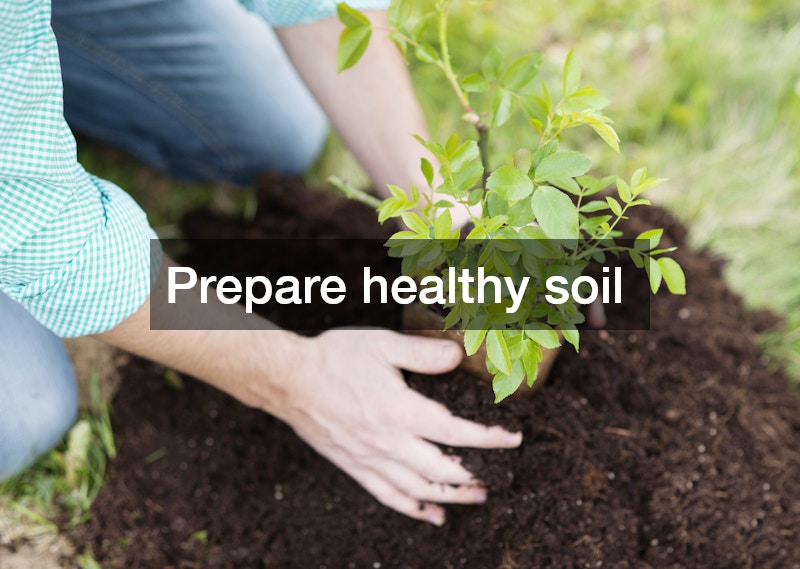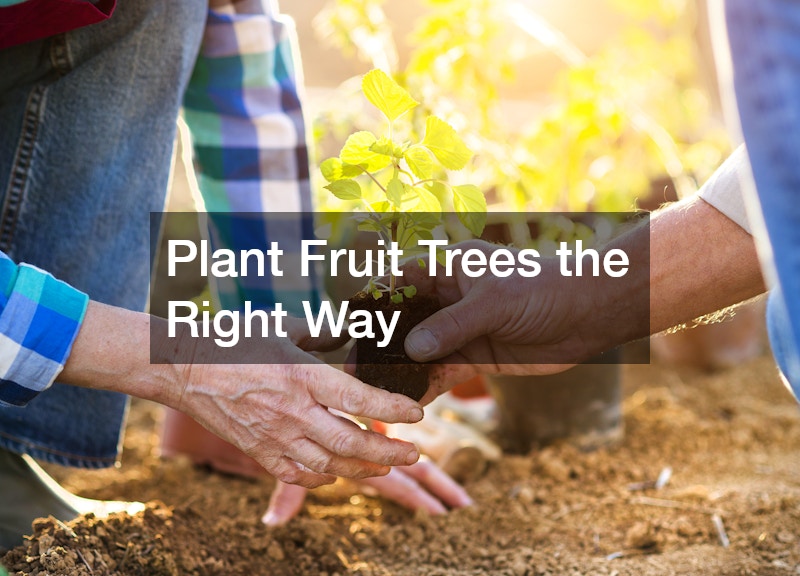Planting a fruit tree is an exciting venture that promises the sweet rewards of homegrown produce. However, many well-intentioned gardeners make common mistakes that can hinder their trees’ growth and productivity. To ensure your fruit trees thrive, it’s essential to understand and implement proper planting techniques.
One of the most prevalent errors is planting trees too deep. While it might seem counterintuitive, burying a tree too deeply can suffocate its roots, inhibiting growth and potentially killing the tree.
Tree surgeons often encounter this issue, and it’s a problem easily avoided. Instead, the tree’s root flare, the point where the trunk transitions into roots, should be at ground level. This allows for optimal root development and overall tree health.
Another critical aspect of tree planting is root placement. Roots naturally seek water and nutrients, often growing in a circular pattern around the trunk. This phenomenon, known as girdling roots, can choke the tree and impede its growth. To prevent this, carefully spread out the roots during planting, ensuring they extend outward rather than circling.
Proper soil preparation is equally important. While it’s tempting to dig a deep hole and fill it with rich compost, this approach can actually harm the tree. A shallow, wide hole is preferable, allowing the roots to establish themselves more readily. Incorporating compost into the existing soil provides essential nutrients without creating an artificial environment that can shock the tree’s root system.
Watering is another crucial factor. Many gardeners make the mistake of overwatering, which can suffocate the roots. Instead, deep, infrequent watering is best. By allowing the soil to dry slightly between watering sessions, you encourage deeper root growth and improve the tree’s drought tolerance.
Mulching is a beneficial practice that helps retain moisture, suppress weeds, and regulate soil temperature. However, it’s essential to apply mulch correctly. Avoid piling mulch against the tree trunk, as this can create a moist environment that promotes disease and pest problems. Instead, spread a layer of mulch around the base of the tree, keeping it a few inches away from the trunk.
Staking is often necessary to support young trees, especially those planted in windy areas. However, excessive or improper staking can hinder trunk development. Use soft materials like rope or fabric straps to avoid damaging the bark. Remove stakes as soon as the tree is established.
Choosing the right location for your fruit tree is crucial. Consider factors such as sunlight, soil drainage, and space requirements. Proper site selection will significantly impact your tree’s health and productivity.
Understanding Your Tree’s Needs
Different fruit trees have specific requirements. Peaches, for example, thrive in well-drained soil and full sun. Apples, on the other hand, can tolerate a wider range of soil conditions and light levels. Research the specific needs of the tree variety you choose to ensure optimal growth.
Pruning for Health and Productivity
Proper pruning is essential for maintaining tree health and maximizing fruit production. Remove dead, diseased, or crossing branches. Thinning out the canopy allows for better air circulation and sunlight penetration, reducing the risk of pests and diseases. Pruning should be done during the dormant season, typically in late winter or early spring.
Protecting Your Trees from Pests and Diseases
Pests and diseases can significantly damage fruit trees. Regular inspection is crucial for early detection. Common pests include aphids, scale insects, and borers. Diseases such as apple scab, powdery mildew, and fire blight can also affect fruit trees. Proper sanitation, including removing fallen fruit and debris, can help prevent problems. When necessary, use organic or chemical controls according to label instructions.
Harvesting and Storing Your Fruit
The reward for your efforts comes in the form of delicious fruit. Timing is essential for harvesting optimal flavor and quality. Different fruits have specific ripening indicators. For example, peaches should be slightly soft when ripe, while apples can be harvested when they reach full size and develop characteristic color. Proper storage techniques can extend the enjoyment of your harvest. Some fruits, like apples, can be stored for several months in a cool, dark place.
By following these guidelines and understanding the unique needs of your fruit trees, you can increase your chances of success in growing healthy and productive orchards. Remember, patience is key. Fruit trees take time to mature, so enjoy the process of nurturing your young trees and watching them develop. With careful attention and proper care, your orchard will be a source of enjoyment and delicious harvests for years to come.
Tree surgeons often emphasize the importance of preventive care. By understanding and addressing potential problems early on, you can save yourself time, money, and frustration. So, whether you’re a seasoned gardener or a novice, take the time to learn about proper tree planting techniques. Your trees will thank you.
.


